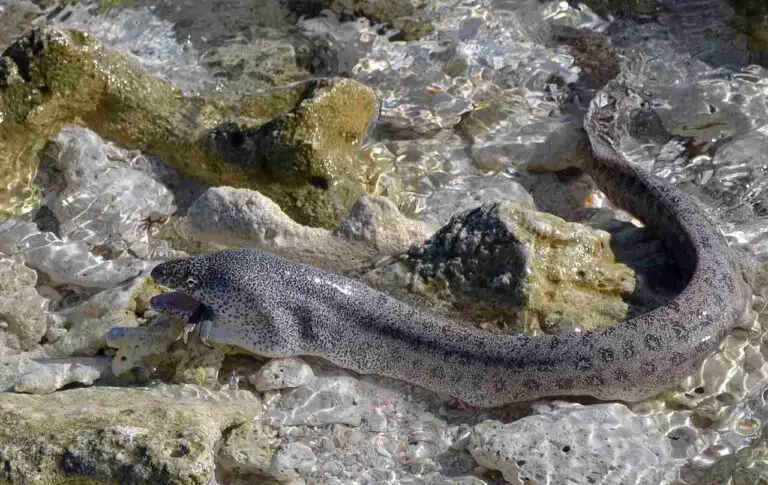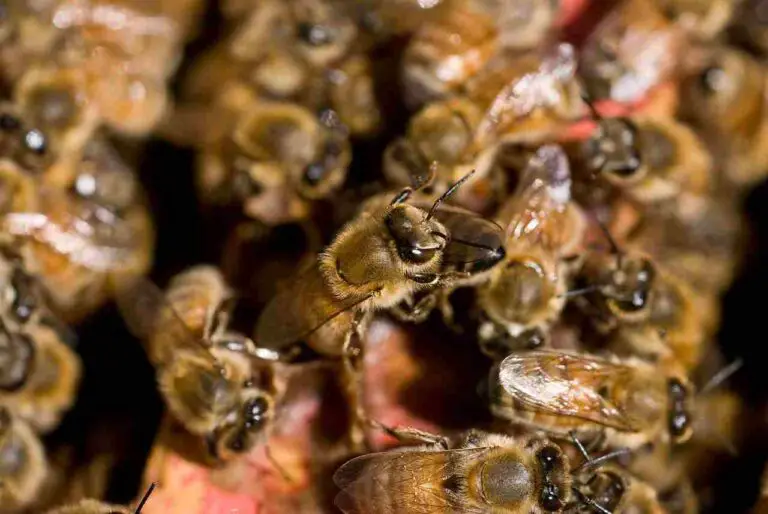Pine Marten Vs Fisher Cat Size, Weight, Overall Comparison Introduction:
In a hypothetical encounter between a pine marten and a fisher cat, two members of the weasel family, we explore the potential dynamics of this confrontation. Both animals share common ancestry but exhibit distinct differences, with fisher cats having darker fur, larger sizes, and heavier builds compared to pine martens. This analysis aims to highlight these distinctions and assert that, in a fight, a fisher cat would likely emerge victorious against a pine marten due to its superior size, weight, and strength.
Pine Marten vs Fisher Cat: Assessing the Likely Victor in a Confrontation
In a theoretical scenario involving a pine marten and a fisher cat, both members of the weasel family, the outcome of a fight is influenced by their shared ancestry and distinct physical characteristics. While pine martens and fisher cats may share similarities, the fisher cat’s larger size and greater weight are likely to contribute to its dominance in a confrontational scenario.
I). Common Ancestry and Weasel Family:
– Pine martens and fisher cats share a common ancestry, both belonging to the Mustelidae family. Despite their common heritage, specific species within the family exhibit variations in size, appearance, and behavior.
II). Distinct Differences: Fur Color, Size, and Weight:
– Fisher cats are distinguished by darker fur coloration, larger sizes, and heavier builds compared to pine martens. These differences contribute to variations in their physical attributes and overall capabilities.
III). Fisher Cat’s Superior Size, Weight, and Strength:
– In a hypothetical fight, a fisher cat would likely win against a pine marten due to its superior size, greater weight, and increased strength. The larger and more robust build of the fisher cat provides a physical advantage in confrontations.

IV). Potential Strategies of the Pine Marten:
– Pine martens, known for their agility and sharp claws, may employ defensive maneuvers in a confrontation with a fisher cat. However, overcoming the fisher cat’s size and strength advantages could prove challenging for the smaller pine marten.
V). Overall Dynamics:
– In this hypothetical scenario, a fisher cat is likely to emerge as the victor in a fight against a pine marten due to its superior size, greater weight, and increased strength. While pine martens may exhibit agility and defensive strategies, the overall dynamics favor the fisher cat in this hypothetical confrontation within the weasel family.
*Details of Comparison
| Criteria | Pine Marten | Fisher |
| Appearance | Slender, brown fur, bushy tail |
Stout, dark fur, irregular patches, bushy tail
|
| Size | 18-26 inches (excluding tail) |
20-25 inches (excluding tail)
|
| Weight | 1.1 to 2.2 pounds | 4 to 13 pounds |
| Bite Force (PSI) | Not extensively studied |
Estimated powerful bite force
|
| Offensive Advantages | Sharp claws, agile climbing |
Powerful jaws, sharp teeth
|
| Defensive Advantages | Agility, tree-climbing |
Strong body, sharp claws
|
| Speed | Up to 20 mph | 15-20 mph |
| Agility | Extremely agile, adept at trees |
Agile on land and in trees
|
| Overall Physical Capacity | Arboreal focus |
Versatile for ground and tree activities
|
| Habitat Preference(s) | Mixed woodlands, forests |
Forests, boreal areas, riparian zones
|
| Tracks | Small, oval with claw marks |
Larger, round with five-toed imprints
|
| Lifespan | 5-10 years | 7-10 years |
| Mode of Feeding | Omnivorous | Carnivorous |
| Intelligence | Highly intelligent |
Intelligent in hunting strategies
|
| Social Behavior | Generally solitary |
Solitary or semi-social
|
| Reproduction | Solitary outside of mating |
Solitary outside of mating
|
| Parental Behavior | Female provides sole care |
Female primarily cares for offspring
|
| Proximity to Humans | Adapts to human proximity |
Generally avoids human areas
|
| Behavior Toward Humans | Shy, may adapt to human presence |
Elusive, avoids human interactions
|
| Danger Posed to Humans | Little to no danger |
Not considered a direct threat
|
| Precautions | Observe from a distance, avoid direct contact |
Same precautions apply
|
| Conservation Status | Varies regionally |
Varies regionally, some stable populations
|
| Conclusion | Belong to Mustelidae, carnivorous, solitary |
Differences in size, appearance, habitat preferences, adaptability to humans
|
Key Points
- Pine martens are generally smaller and more adaptable to human presence.
- Fishers are larger, have a powerful bite force, and tend to be more elusive around humans.
- Both species are carnivorous, exhibit intelligence, and have solitary lifestyles.
- Differences in habitat preferences, agility, and defensive mechanisms contribute to their ecological roles.
- Conservation status varies regionally, emphasizing the importance of localized conservation efforts.
1. Taxonomy:
Pine Marten (Martes martes):
Kingdom: Animalia
Phylum: Chordata
Class: Mammalia
Order: Carnivora
Family: Mustelidae
Genus: Martes
Species: M. martes
Fisher (Pekania pennanti):
Kingdom: Animalia
Phylum: Chordata
Class: Mammalia
Order: Carnivora
Family: Mustelidae
Genus: Pekania
Species: P. pennanti
2. Appearance:
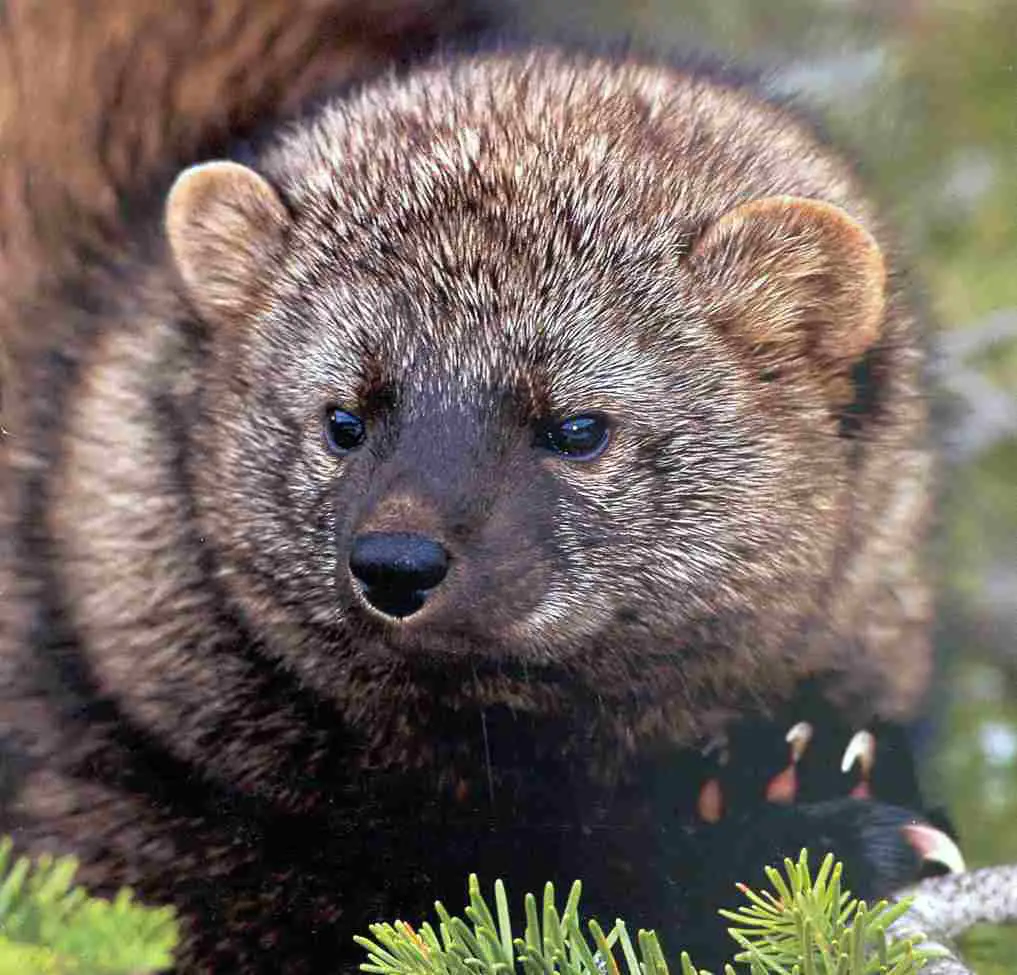
Pine Marten:
Slender, weasel-like body with a pointed face.
Brown fur with a creamy-yellow throat patch.
Bushy tail, measuring about one-third of its body length.
Fisher:
Stout and robust build, resembling a large dark-brownish mink.
Short legs, rounded ears, and a bushy tail.
Dark fur with irregular patches on the chest and abdomen.
Comparison:
While both share a weasel-like appearance, the pine marten tends to be more slender, with distinctive coloration, compared to the robust build and darker fur of the fisher.
Ecological Implications:
Their different appearances might influence their ecological roles, with the pine marten possibly being more adapted for agility and tree-dwelling, and the fisher for ground-based activities.
3. Size:

Pine Marten:
Length: 18-26 inches (45-65 cm) excluding tail.
Tail length: 6-10 inches (15-25 cm).
Fisher:
Length: 20-25 inches (51-64 cm) excluding tail.
Tail length: 12-16 inches (30-41 cm).
Comparison:
The fisher is generally slightly larger than the pine marten, both in body length and tail length.
Ecological Implications:
Size differences may impact their hunting strategies, territory requirements, and interactions with prey species.
4. Weight:
Pine Marten:
1.1 to 2.2 pounds (0.5 to 1 kg).
Fisher:
4 to 13 pounds (1.8 to 5.9 kg).
Comparison:
Fishers are significantly heavier than pine martens, reflecting differences in their overall body mass.
Ecological Implications:
Weight influences the prey selection and energy requirements of these species, potentially affecting their roles in the ecosystem.
5. Bite Force (PSI – Pounds per Square Inch):
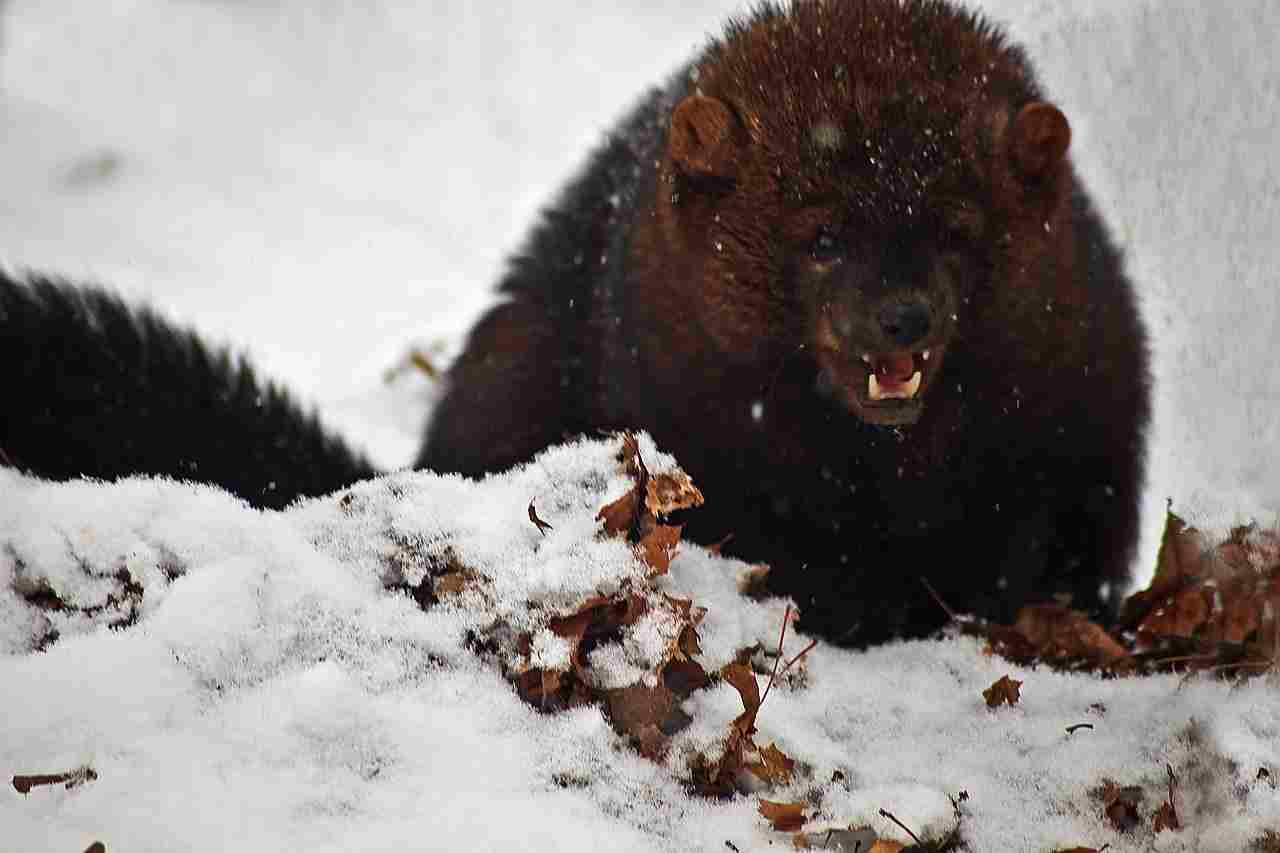
Pine Marten:
Bite force not extensively studied but relatively lower compared to larger carnivores.
Fisher:
Estimated to have a powerful bite force, but specific PSI data may be limited.
Comparison:
The fisher likely possesses a stronger bite force compared to the pine marten.
Ecological Implications:
Bite force can affect their ability to consume different prey items and potentially influence their position in the food web.
6. Physical Offensive Advantages:
Pine Marten:
Sharp retractable claws and agile climbing abilities for tree-based hunting.
Fisher:
Powerful jaws and sharp teeth for capturing and consuming a variety of prey.
Comparison:
The pine marten relies on agility and climbing, while the fisher’s physical offensive advantages are more centered around powerful jaws.
Ecological Implications:
These adaptations may influence their hunting strategies, prey preferences, and interactions with other species in their ecosystems.
7. Physical Defensive Advantages:
Pine Marten:
Agility and tree-climbing abilities to escape predators.
Fisher:
Strong, robust body and sharp claws for defense against predators.
Comparison:
The pine marten’s defense is often based on agility and arboreal escape, whereas the fisher relies on its physical strength.
Ecological Implications:
These defensive mechanisms play a role in shaping their interactions with larger predators and competition within their habitats.
8. Speed (Km/hour or Mile/hour):

Pine Marten:
Capable of reaching speeds up to 20 mph (32 km/h).
Fisher:
Can run at speeds of around 15-20 mph (24-32 km/h).
Comparison:
The pine marten tends to be slightly faster than the fisher.
Ecological Implications:
Speed influences their hunting efficiency and ability to escape from predators or threats.
9. Agility:

Pine Marten:
Extremely agile, adept at navigating trees and dense vegetation.
Fisher:
Agile on both land and in trees, with the ability to climb and move swiftly.
Comparison:
Both species exhibit high levels of agility, but the pine marten is often considered exceptionally agile in tree environments.
Ecological Implications:
Their agility is crucial for hunting, navigating varied terrains, and avoiding predators or dangers.
10. Overall Physical Capacity:
Pine Marten:
Well-adapted for arboreal life, with a slender build, sharp claws, and excellent climbing abilities.
Fisher:
Suited for both ground and tree activities, with a robust body, strong jaws, and climbing proficiency.
Comparison:
The pine marten excels in arboreal capacities, while the fisher demonstrates a versatile physical adaptation for both ground and tree habitats.
Ecological Implications:
Their overall physical capacity affects their roles in different ecosystems, influencing prey selection, territory use, and interactions with other species.
11. Habitat Preference(s):

Pine Marten:
Prefers mixed woodlands and forested areas with access to trees and suitable dens.
Fisher:
Found in diverse habitats including forests, boreal and coniferous forests, and riparian areas.
Comparison:
While both species share some habitat preferences, the pine marten’s association with tree-rich environments may be more pronounced.
Ecological Implications:
Their habitat preferences impact their distribution, competition with other species, and the overall biodiversity of the ecosystems they inhabit.
12. Tracks:
Pine Marten:
Small, oval-shaped tracks with distinct claw marks.
Fisher:
Larger, round tracks with prominent five-toed imprints and claw marks.
Comparison:
Track differences help in identification, with the fisher leaving larger and rounder tracks compared to the smaller, more oval tracks of the pine marten.
Ecological Implications:
Tracking can aid researchers and wildlife enthusiasts in monitoring their populations, distribution, and behaviors.
13. Lifespan:
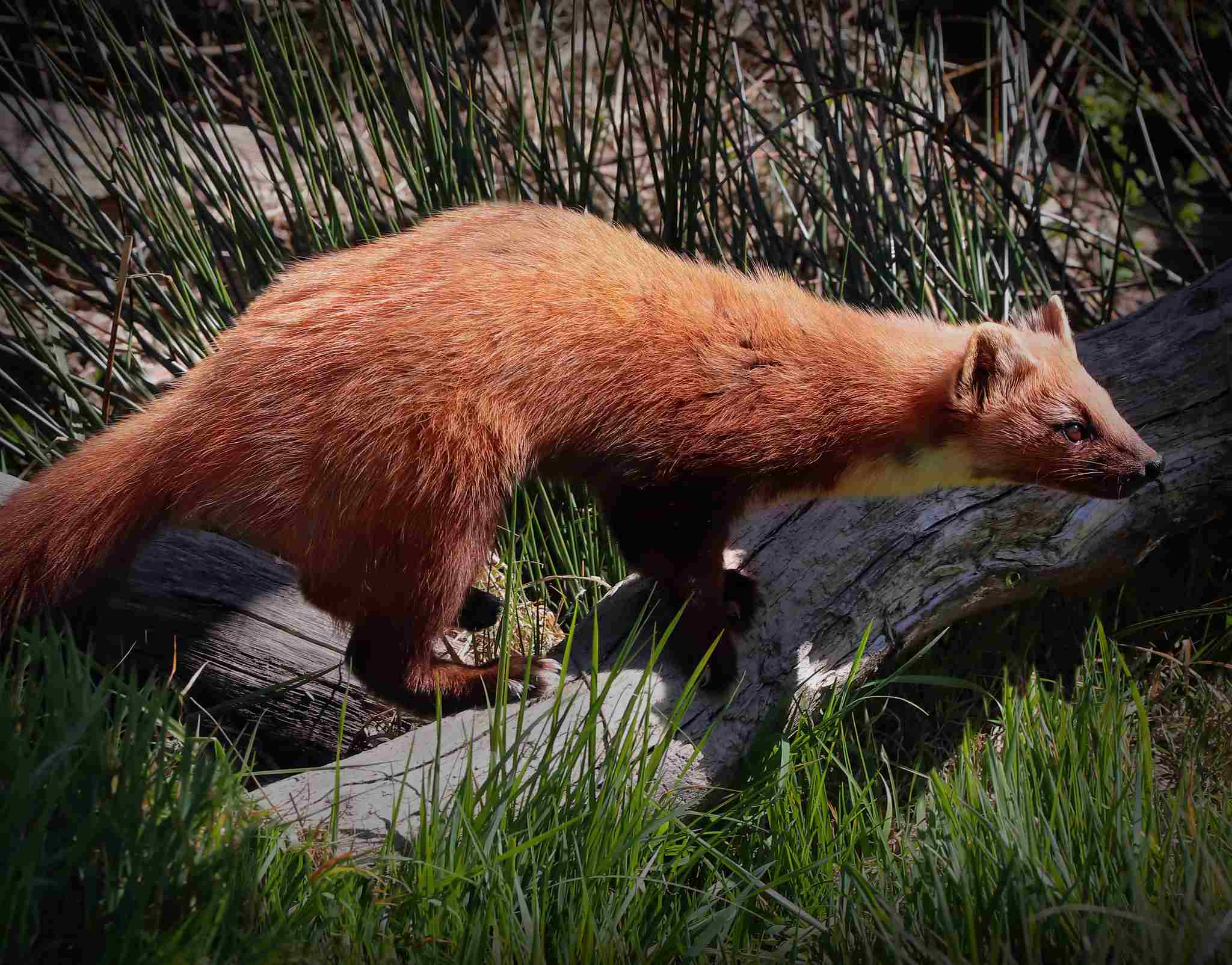
Pine Marten:
Typically lives 5-10 years in the wild.
Fisher:
Average lifespan ranges from 7 to 10 years in the wild.
Comparison:
Both species have relatively similar lifespans in the wild.
Ecological Implications:
Lifespan influences population dynamics, reproductive strategies, and the overall stability of their respective ecosystems.
14. Mode of Feeding:
Pine Marten:
Omnivorous diet including small mammals, birds, insects, fruits, and berries.
Fisher:
Carnivorous diet, preying on small mammals like porcupines, rabbits, and birds.
Comparison:
While both are carnivorous, the pine marten’s diet is more diverse and includes a variety of foods beyond meat.
Ecological Implications:
Their feeding habits impact the population dynamics of prey species and contribute to the balance of the ecosystems they inhabit.
15. Intelligence:
Pine Marten:
Considered highly intelligent, displaying problem-solving skills and adaptability.
Fisher:
Exhibits intelligence in hunting strategies and adapting to different environments.
Comparison:
Both species are regarded as intelligent, adapting their behaviors to varying challenges in their environments.
Ecological Implications:
Intelligence influences their ability to exploit resources, navigate their habitats, and respond to changing ecological conditions.
16. Social Behavior:

Pine Marten:
Generally solitary, with some social interactions during mating season.
Fisher:
Can be solitary or exhibit semi-social behavior, especially during mating and raising offspring.
Comparison:
While both species are primarily solitary, the fisher shows more social tendencies during specific life stages.
Ecological Implications:
Social behaviors impact their interactions with conspecifics, territory dynamics, and reproductive success.
17. Mode of Reproduction:
Pine Marten:
Typically solitary during most of the year, coming together for mating season.
Fisher:
Exhibits a similar pattern, with solitary behavior outside of the mating season.
Comparison:
Both species follow a solitary lifestyle for most of the year, coming together for reproduction.
Ecological Implications:
Reproductive behavior influences population dynamics, genetic diversity, and the distribution of these species within their habitats.
18. Parental Behavior:
Pine Marten:
Female pine martens provide sole parental care, raising and protecting the kits.
Fisher:
Females are also primarily responsible for raising and protecting their offspring.
Comparison:
Both species exhibit maternal care, with females taking the lead in nurturing and protecting their young.
Ecological Implications:
Parental behavior influences the survival rates of offspring, contributes to population stability, and affects overall ecosystem dynamics.
19. Proximity to Human-Inhabited Areas:
Pine Marten:
Can adapt to living in proximity to human settlements, occasionally entering urban or suburban areas.
Fisher:
Generally avoids human-populated areas but may be found in forests near human habitats.
Comparison:
Pine martens show a higher tolerance for human presence compared to fishers.
Ecological Implications:
Their ability to coexist or avoid human-inhabited areas affects potential conflicts, resource utilization, and conservation efforts.
20. Behavior Toward Humans:
Pine Marten:
Typically shy and elusive but may become accustomed to human presence, especially around food sources.
Fisher:
Tends to be more elusive and avoids human interactions, displaying a warier behavior.
Comparison:
Pine martens may exhibit more curiosity or adaptability towards human presence compared to the more cautious behavior of fishers.
Ecological Implications:
Behavioral responses to humans influence conservation strategies, potential conflicts, and the perception of these species in local communities.
21. Danger Posed to Humans:
Pine Marten:
Generally poses little to no danger to humans; bites are rare.
Fisher:
Typically avoids humans and is not considered a direct threat; bites are rare.
Comparison:
Both species are not known for posing significant danger to humans.
Ecological Implications:
Low risk to humans contributes to a more harmonious coexistence and reduces the likelihood of negative human-wildlife interactions.
22. Associated Precautions:
Pine Marten:
Best observed from a distance; avoid direct contact.
Fisher:
Similar precautions apply—observe from a distance and avoid direct contact.
Comparison:
Precautions for both species include maintaining a safe distance to minimize disturbances.
Ecological Implications:
Promoting responsible wildlife viewing helps protect these species and their habitats, contributing to conservation efforts.
23. Conservation Status:
Pine Marten:
Conservation status varies regionally; some populations are stable, while others face threats. Generally, not considered globally threatened.
Fisher:
Conservation status varies; some populations are stable, but in certain regions, there may be concerns due to habitat loss and trapping.
Comparison:
Conservation status is influenced by regional factors, and both species may face localized threats.
Ecological Implications:
Monitoring and addressing conservation status are crucial for preserving biodiversity and ecosystem health.
Summary of Comparison
Appearance:
Pine Marten: Slender, brown fur, creamy-yellow throat patch, bushy tail.
Fisher: Stout, dark fur, irregular patches on chest, bushy tail.
Size:
Pine Marten: 18-26 inches (excluding tail).
Fisher: 20-25 inches (excluding tail).
Weight:
Pine Marten: 1.1 to 2.2 pounds.
Fisher: 4 to 13 pounds.
Bite Force (PSI):
Pine Marten: Not extensively studied.
Fisher: Estimated to have a powerful bite force.
Physical Offensive Advantages:
Pine Marten: Sharp claws, agile climbing.
Fisher: Powerful jaws, sharp teeth.
Physical Defensive Advantages:
Pine Marten: Agility, tree-climbing.
Fisher: Strong body, sharp claws.
Speed:
Pine Marten: Up to 20 mph.
Fisher: 15-20 mph.
Agility:
Pine Marten: Extremely agile, adept at tree navigation.
Fisher: Agile on land and in trees.
Overall Physical Capacity:
Pine Marten: Arboreal focus.
Fisher: Versatile for ground and tree activities.
Habitat Preference(s):
Pine Marten: Mixed woodlands, forested areas.
Fisher: Forests, boreal areas, riparian zones.
Tracks:
Pine Marten: Small, oval with claw marks.
Fisher: Larger, round with prominent five-toed imprints.
Lifespan:
Pine Marten: 5-10 years.
Fisher: 7-10 years.
Mode of Feeding:
Pine Marten: Omnivorous.
Fisher: Carnivorous.
Intelligence:
Pine Marten: Highly intelligent.
Fisher: Intelligent in hunting strategies.
Social Behavior:
Pine Marten: Generally solitary.
Fisher: Solitary or semi-social.
Mode of Reproduction:
Pine Marten: Solitary outside of mating season.
Fisher: Similar solitary pattern.
Parental Behavior:
Pine Marten: Female provides sole care.
Fisher: Female primarily cares for offspring.
Proximity to Human-Inhabited Areas:
Pine Marten: Adapts to human proximity.
Fisher: Generally avoids human-populated areas.
Behavior Toward Humans:
Pine Marten: Shy, may adapt to human presence.
Fisher: Elusive, avoids human interactions.
Danger Posed to Humans:
Pine Marten: Little to no danger.
Fisher: Not considered a direct threat.
Associated Precautions:
Both: Observe from a distance, avoid direct contact.
Conservation Status:
Both: Varies regionally, some stable populations.
Conclusion:
Similarities:
Both pine martens and fishers belong to the Mustelidae family, sharing traits such as carnivorous diets, solitary lifestyles, and similar lifespans.
Differences:
Differences in size, appearance, habitat preferences, and behavior, including the pine marten’s adaptability to human-inhabited areas and the fisher’s preference for more secluded habitats.







